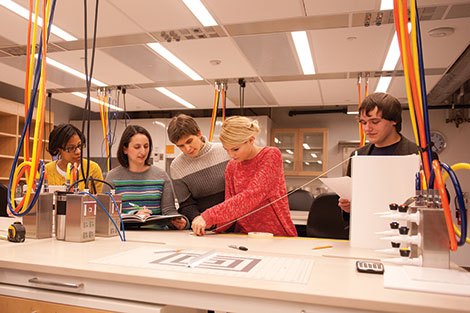Many people agree that an increase in the use of quantitative thinking generally, and mathematical modeling specifically, in undergraduate biology education is called for– particularly in lower-division courses where such methods are rarely employed. I am lucky to be a part of several projects to do this:
- Our new (August 2018-August 2023) NSF IUSE (Improving Undergraduate STEM education) award, Collaborative Research: A Model of Institutional and Community Transformation for Teaching and Learning Quantitative Reasoning in the Biological Sciences, is broader than ‘only’ adding quantitative thinking to biology courses, but that is a major component of the award, and we will be working with community college partners as well as UMBC colleagues over the next 5 years to create modules for use in undergraduate biology courses that have a quantitative component, as well as measuring the effect of exposure to those modules both on conceptual understanding of biology and ability to use quantitative thinking in biology.
- A Howard Hughes Medical Institute-funded collaboration, the NEXUS project, in which multidisciplinary groups from four institutions are working on integrating quantitative concepts within more than one discipline in undergraduate programs. UMBC’s group, led by Jeff Leips, developed ten comprehensive, stand-alone modules in which students employ mathematical modeling techniques to topics in their introductory biology courses. We recently published our work examining the impact of these modules. If you are interested in seeing or using these modules, you can have them—they’re right here!
- In addition to this project, I am part of a team with members from the Biology department (Mauricio Bustos and Karen Whitworth) and Education (Chris Rakes) that has developed computer simulations of biological reactions and processes as teaching tools to improve conceptual understanding in undergraduate biology labs. We thank the Hrabowski Pedagogical Innovation Fund and the College of Natural and Mathematical Sciences Dean’s Office for funding some of these efforts, and we have recently published some of our work on this topic.
- Finally, I’ve gotten to be a part of two interdisciplinary science courses at UMBC: first, Quantitative Reasoning: Measurement and Skills Lab, a course for first-year students which emphasizes quantitative and graphical thinking as well as estimation skills. How many blades of grass are there on the UMBC campus? And second, Medical Case Studies, a course we developed on a model produced by our NEXUS colleagues at the University of Miami and which is now currently (Fall 2018) being taught for the third time.
To explore this topic, these papers are a great start.
